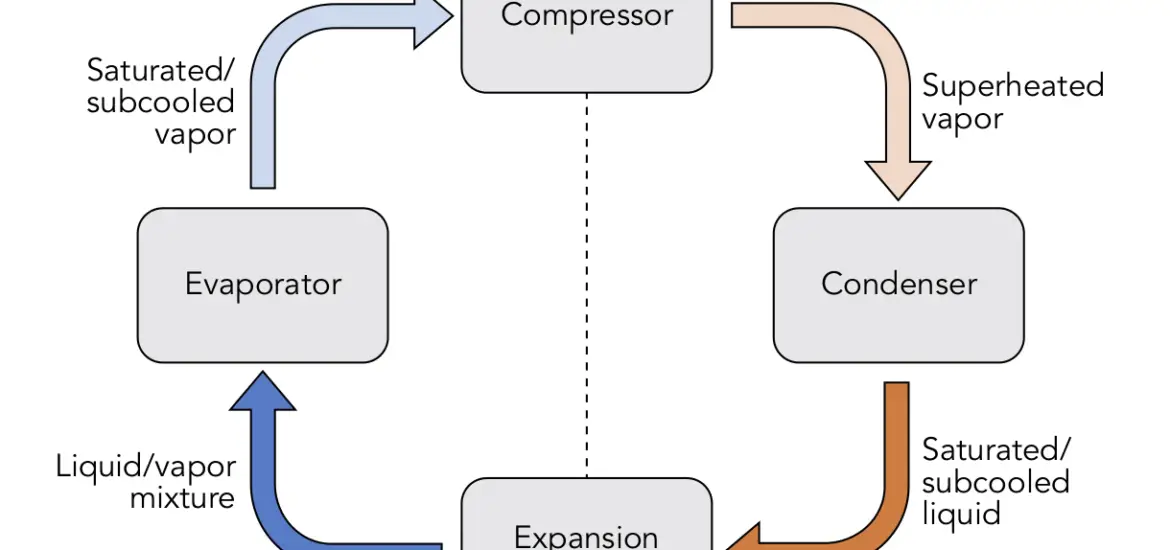Hey there, homeowners! Ever wondered about the term “subcooling chart R22”? If you’re not an HVAC expert, it may sound like a foreign language, right? But fear not! In this article, we’re going to break it all down and help you understand the importance of subcooling in your home’s refrigeration cycle. So let’s dive right in!

Table of Contents
Definition of Subcooling
So, what exactly is subcooling? In a nutshell, it’s the process of cooling refrigerant below its saturation point. Why is this important, you ask? Well, it ensures that the refrigerant entering your home’s evaporator is in its liquid state, which is crucial for efficient cooling. If you want a comfy home, you definitely want proper subcooling!
Factors Affecting Subcooling
Now that we know why subcooling matters, let’s look at what affects it. Some key factors include:
- Refrigerant type (R22 for example)
- Evaporator temperature
- Condenser temperature
- Ambient temperature
- System pressure
Subcooling and R22 Refrigerant
R22 used to be a common refrigerant, but it’s being phased out due to its impact on the ozone layer. No worries though, there are alternative refrigerants out there! For those still using R22, understanding subcooling is crucial for getting the most out of your system before transitioning to a more eco-friendly option.
R22 Subcooling Chart
Understanding the Chart
Now, let’s talk about the subcooling chart R22. This handy chart helps you determine the optimal subcooling level for your system. It’s like a map for your cooling system’s efficiency! It consists of temperature and pressure data, which together help you find the right balance for top-notch performance.
How to Read the Chart
Feeling a bit overwhelmed by the chart? Don’t worry! We’ll walk you through it step by step:
- Find the saturation points for your system
- Locate the corresponding subcooling values
- Make adjustments as needed to reach optimal subcooling
Practical Applications
Why is knowing how to read the subcooling chart R22 important? It helps you:
- Diagnose system issues
- Optimize performance for maximum comfort
- Prevent costly compressor damage
Subcooling Calculation
Formula for Subcooling
Ready for some math? Don’t worry, it’s not as scary as it sounds! The subcooling formula is simple: just subtract the actual refrigerant temperature from the saturation temperature. You’ll need accurate temperature and pressure data for this calculation, but once you have those, it’s a breeze!
Measuring Data for Calculation
So, how do you get accurate data for your calculations? Just follow these best practices:
- Use reliable tools, like digital thermometers and pressure gauges
- Measure at the correct locations within your system
- Take multiple readings to ensure consistency
Sample Calculation
Let’s walk through a quick example to see how it all comes together:
- Let’s say the saturation temperature is 100°F, and the actual refrigerant temperature is 90°F
- Subtract the actual temperature from the saturation temperature: 100 – 90 = 10°F
- Voilà! You’ve calculated a subcooling value of 10°F
Now you know how to calculate subcooling for your R22 system!
Troubleshooting and Optimization
Common Issues and Solutions
Is your system not cooling as it should? You might be dealing with one of these common issues:
- Insufficient subcooling: This can lead to poor cooling and increased energy bills. Solution: Add more refrigerant or improve airflow through the condenser.
- Excessive subcooling: This can cause liquid refrigerant to flood the compressor, leading to damage. Solution: Remove some refrigerant or check for restrictions in the system.
System Optimization
Want to get the most out of your cooling system? Here are some tips:
- Adjust the refrigerant charge for optimal subcooling
- Keep the condenser clean and well-maintained
- Inspect and maintain evaporator coils regularly
Environmental Considerations
As we mentioned earlier, R22 is being phased out due to its environmental impact. It’s essential to consider transitioning to a more eco-friendly refrigerant. Keep in mind that alternative refrigerants may have different subcooling characteristics, so be prepared to adjust your calculations accordingly.
For more articles on subcooling and superheating, click here.
Conclusion
There you have it, homeowners! Understanding the subcooling chart R22 and how to calculate subcooling is crucial for optimizing your system’s performance and keeping your home comfortable. Plus, being aware of the environmental impact of R22 and considering alternative refrigerants is a responsible choice for our planet. Happy cooling!